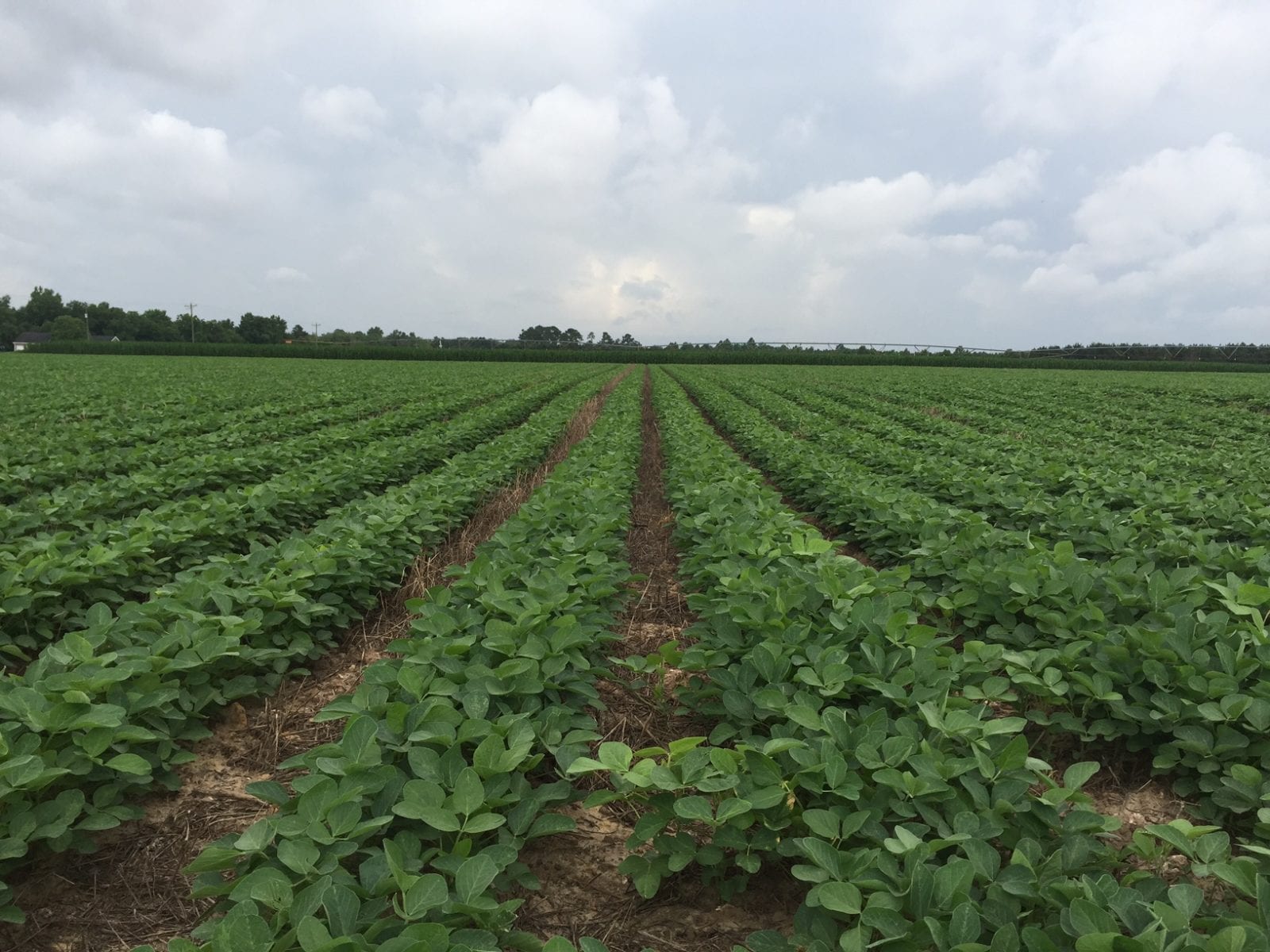 Farmers talk about the weather a lot. It’s often part of our response when asked how we are doing. One reason for that is its huge influence on our crops. After a dry spell last month, we’ve gotten good rains, and that makes all the difference for our crops. We are seeing that rain really does make grain.
Farmers talk about the weather a lot. It’s often part of our response when asked how we are doing. One reason for that is its huge influence on our crops. After a dry spell last month, we’ve gotten good rains, and that makes all the difference for our crops. We are seeing that rain really does make grain.
Our soybeans are now looking very good. They are an amazing plant that can recover from stress well. The rain allowed them to grow taller, bush out more, and develop more pods. They currently are heavily podded and are continuing to bloom. With another good soaking rain, we could have one of our best soybean crops.
We applied fungicide and insecticide to our soybeans during the first week of August to support plant health and protect against late-season diseases and insects. Our “highboy” sprayer has narrow wheels and sits high enough in the air that we can drive through the crop when it is bigger, like it is now, with minimal damage from the wheels.
 The corn got some of the rain it needed, but it was a bit late. It pollinated well, but many of the ears are small. The rain will help fill the kernels out, but the crop will likely be average.
The corn got some of the rain it needed, but it was a bit late. It pollinated well, but many of the ears are small. The rain will help fill the kernels out, but the crop will likely be average.
Right now, we’ve got a bit of down time in the season, while we wait for the soybeans and corn to mature. We are doing some maintenance work, cleaning machinery, getting ready for harvest next month, and continuing to enjoy local fairs, which are a big deal for our family.
I’ve been mowing waterways and creek banks for a few reasons. Mowing helps control the weeds in these areas, and we don’t want those weeds to spread into the fields. It also helps thicken the turf, meaning that mowing stimulates new root and shoot growth. Stronger roots allow the grass to better keep soil in place in these areas of land that conserve and protect our soils from heavy rains. Plus, mowing makes them look nicer.
While we’ve gotten recent timely rains, the weather has been dramatically different in other pockets of the Midwest. A recent windstorm caused significant damage in the heart of the Midwest. Some areas have been too wet, while others have been too dry. But I will have the chance to see all that for myself.
During the third week of August, I am participating in the ProFarmer Crop Tour, an annual event that scouts the U.S. crops and gets a sense of potential yields. I have been participating in this event for years. It will look a bit different in 2020 because of health and safety precautions related to limiting the spread of COVID-19. We will have roughly half the number of scouts as usual, and daily reports will be shared with local farmers over Zoom each evening instead of in person over dinner.

But as usual, I will start in Columbus, Ohio, not far from my home, on the eastern side of the U.S. Midwest. Over the course of the week, a group of volunteer scouts like myself will travel through Ohio, Indiana, Illinois and Iowa, ending up in southeastern Minnesota, in the northern U.S. Midwest. Every day we will follow predetermined routes with multiple stops, estimating soybean and corn yields along the way.
Another group will cover the western part of the U.S. Midwest, covering Nebraska, South Dakota, Iowa and Minnesota, and we will end in the same location to share a comprehensive estimate for the bulk of U.S. soybean and corn yields for 2020. A recap of the entire ProFarmer Crop Tour will be on the agenda at the virtual U.S. Soy Global Trade Exchange & Specialty Grains Conference on August 25.
I will see where rain has made grain, and where weather conditions have cut into yield potential. And, I will have a good sense of how my area compares to the rest of the Midwest. For me, that’s part of getting ready for harvest, which will likely start during the first half of September.

